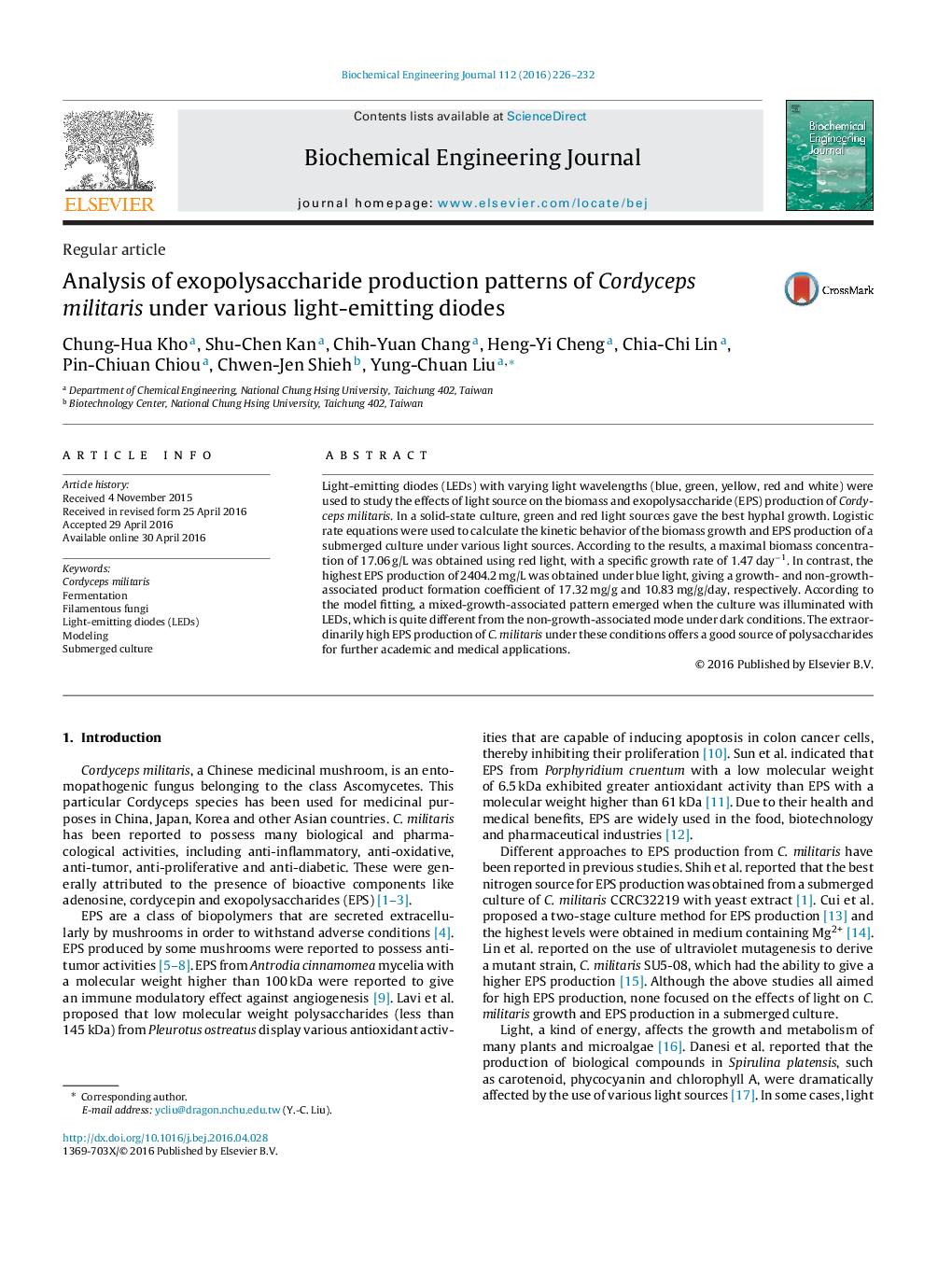| Article ID | Journal | Published Year | Pages | File Type |
|---|---|---|---|---|
| 2727 | Biochemical Engineering Journal | 2016 | 7 Pages |
•Effect of varying LEDs on EPS production of Cordyceps militaris was tested.•Red LED is the best for biomass growth and blue LED gives the highest EPS production.•A non-growth associated mode fitted well for EPS production in dark conditions.•A mixed growth-associated pattern emerged when the culture was illuminated with LEDs.•C. militaris in submerged culture gives extraordinarily high EPS prodution.
Light-emitting diodes (LEDs) with varying light wavelengths (blue, green, yellow, red and white) were used to study the effects of light source on the biomass and exopolysaccharide (EPS) production of Cordyceps militaris. In a solid-state culture, green and red light sources gave the best hyphal growth. Logistic rate equations were used to calculate the kinetic behavior of the biomass growth and EPS production of a submerged culture under various light sources. According to the results, a maximal biomass concentration of 17.06 g/L was obtained using red light, with a specific growth rate of 1.47 day−1. In contrast, the highest EPS production of 2404.2 mg/L was obtained under blue light, giving a growth- and non-growth-associated product formation coefficient of 17.32 mg/g and 10.83 mg/g/day, respectively. According to the model fitting, a mixed-growth-associated pattern emerged when the culture was illuminated with LEDs, which is quite different from the non-growth-associated mode under dark conditions. The extraordinarily high EPS production of C. militaris under these conditions offers a good source of polysaccharides for further academic and medical applications.
